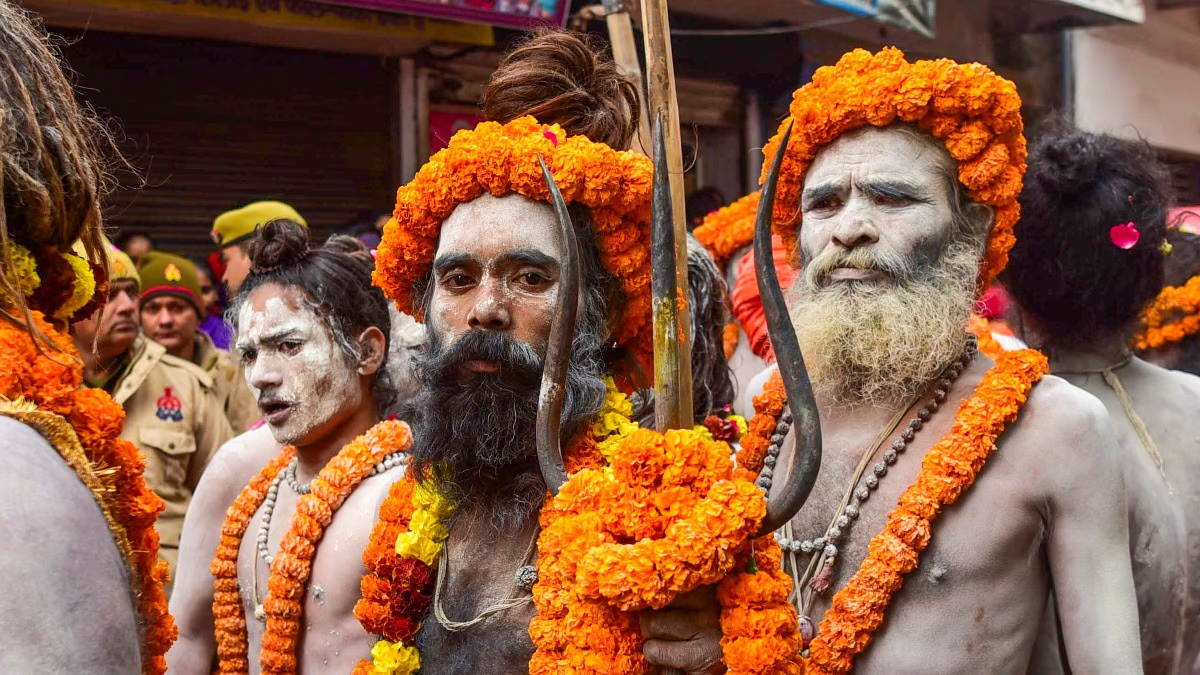The world's largest human congregation, the 'Maha Kumbh,' is commencing in Prayagraj, Uttar Pradesh. This year's gathering is expected to attract over 400 million people, with comprehensive security measures in place. Alongside devotees, lakhs of sages and saints attend the Kumbh, with special arrangements made for their participation. Among them, the enigmatic Naga Sadhus are a subject of fascination, becoming an essential part of the Kumbh experience. Here, we explore the origins of Naga Sadhus and their lasting traditions.
The Majestic Presence of Naga Sadhus at Kumbh
During Kumbh, the Naga Sadhus perform the sacred Amrit Snan in various akharas. Female Naga Sadhus adorn themselves with saffron attire, avoiding public nudity, contrary to their male counterparts who grow long hair while female Naga Sadhvis keep their heads shaven and strictly observe celibacy. The Kumbh attracts Naga Sadhvis from India and abroad, gathering in reverence.
Mahant Divya Giri from the Kumbh shares that the tradition of Naga Sadhvis has been longstanding. Originally part of the Juna Akhara, they now have a separate branch. She notes that Naga Sadhvis follow equally rigorous rules as the male Sadhus and, as usual, partake in the Amrit Snan at Kumbh, considered the main attraction.
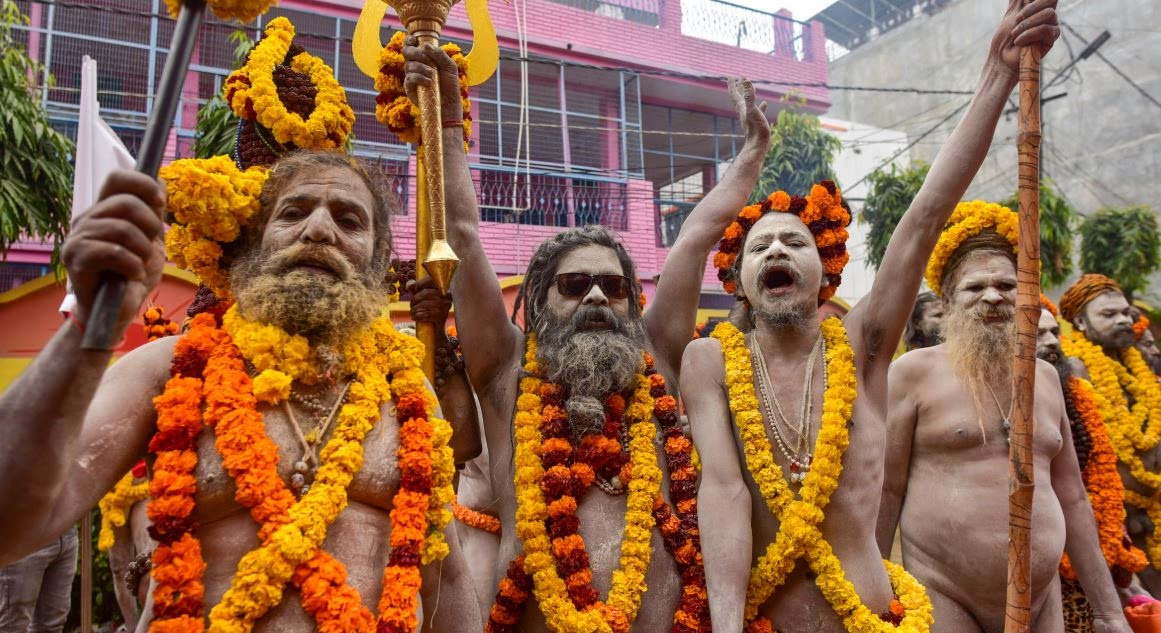
Source: aajtak
The divine Naga Sadhus lead lives of profound asceticism, marked by bodies smeared in ash and clad in saffron robes. Their foreheads bear the Tripund, necks are adorned with Rudraksha beads, and they wield the trident, symbolic of their presence. Primarily devotees of Shiva and Shakti, Naga Sadhus renounce familial ties, relationships, and worldly comforts to earn their Naga title.
The Origins of Naga Tradition
Thanapati Ghannanad Giri from the Juna Akhara explains that those titled as Naga by the saint society and Shankaracharya can retain the Naga status. Naga ascetics, distinguished by their Digambar attire, step forward to spread dharma when the need arises, while Sree Digambar individuals remain clothed at all times. Those who perform their own last rites during life become truly detached from worldly desires.
Historically, Naga Sadhus have acted as warriors to protect religion. Though rarely mentioned in books, history testifies to their commitment by taking up arms, often sacrificing their lives to safeguard dharma. Naga Sadhus were involved in large-scale wars to save the Sanatan Dharma, leaving a significant impact.
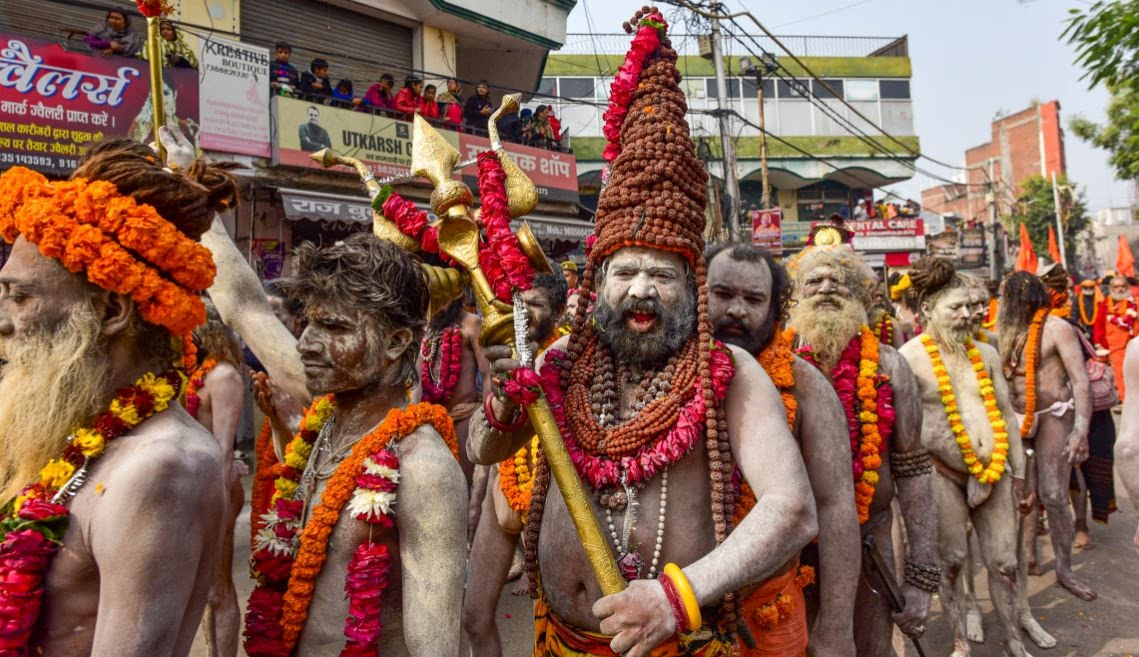
Source: aajtak
Naga Sadhus: Defenders of Faith
To walk the path of dharma protection, Naga Sadhus lead lives of severe discipline to prepare for adversity. Without enduring personal struggle, they wouldn't be able to protect the faith. Stories recount how in the 18th century, the Afghan invader Ahmad Shah Abdali's brutal campaign was challenged by Naga Sadhus emerging from the Himalayan caves.
Historical records indicate that around 1751, Ahmad Khan Bungash besieged the Allahabad Fort during Kumbh, but thousands of Naga ascetics, after performing their religious rites, armed themselves and fiercely retaliated against Bungash's forces. After a prolonged battle, the sacred city of Prayagraj was safeguarded, compelling Bungash's troops to withdraw. Throughout India, Naga Sadhus continue to undertake seemingly impossible tasks, either through rigor, mystic powers, or physical prowess.
During 1666, Aurangzeb's forces attacked the Haridwar Kumbh, but once again, the Naga ascetics took the forefront to fight back. Tales from Jodhpur and Haridwar recount the heroism of thousands of Naga ascetics who sacrificed their lives for faith. Despite India's liberation, Naga Sadhus have chosen to forgo arms, entrusting the defense of the nation to the valiant soldiers while continuing to receive guidance in weaponry from their gurus.
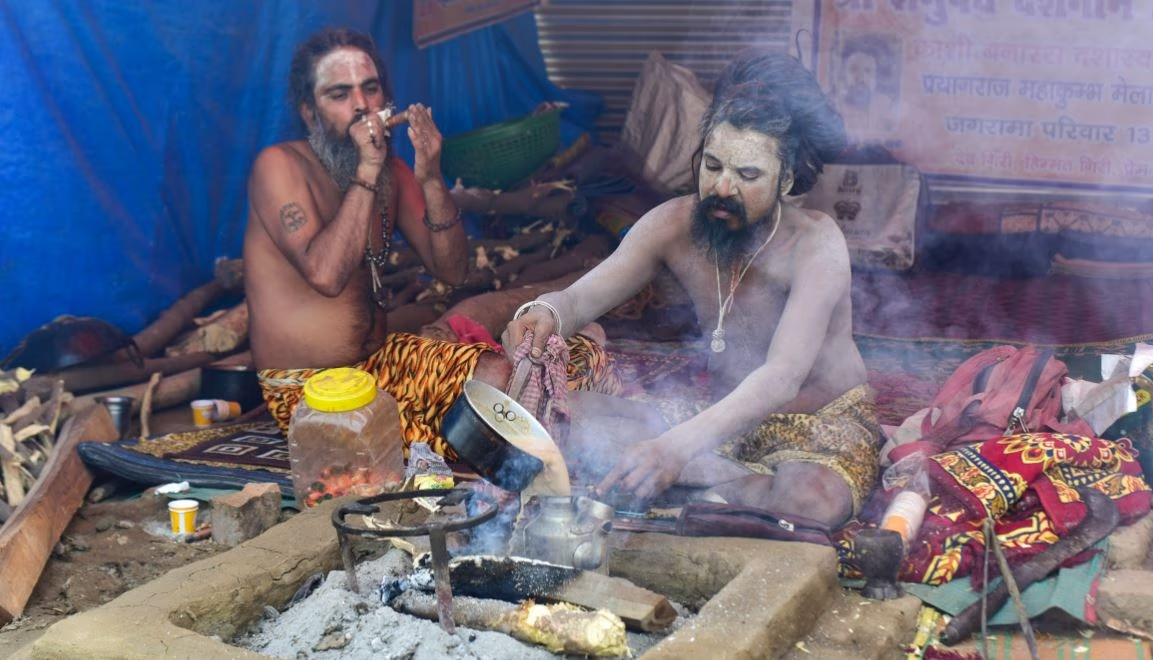
Source: aajtak
Naga Sadhus Embrace Ash as a Symbol
During the Naga initiation, two types of Naga Sadhus arise: Digambar, who wear minimal attire, and Sree Digambar, who remain nude. Becoming a Sree Digambar is the most challenging as it involves complete suppression of desires, achieved through self-mortification rituals. The ash they smear symbolizes mortality and serves as a spiritual cover.
At Kumbh, various Naga Sadhus undergo consecration and adopt names based on their location: in Prayagraj they're known as Naga, in Ujjain as Khuni Naga, in Haridwar as Barfani Naga, and in Nashik as Khichdiya Naga. Post-initiation, they receive hierarchical titles such as Kotwal, Pujari, Bada Kotwal, Bhandari, Kothari, Bada Kothari, Mahant, and Secretary, with the latter being most prestigious. Naga Sadhus reside in akhara ashrams and temples, some retreating to mountain caves, journeying mostly on foot as per akhara directives, where they kindle sacred fires during their journeys.
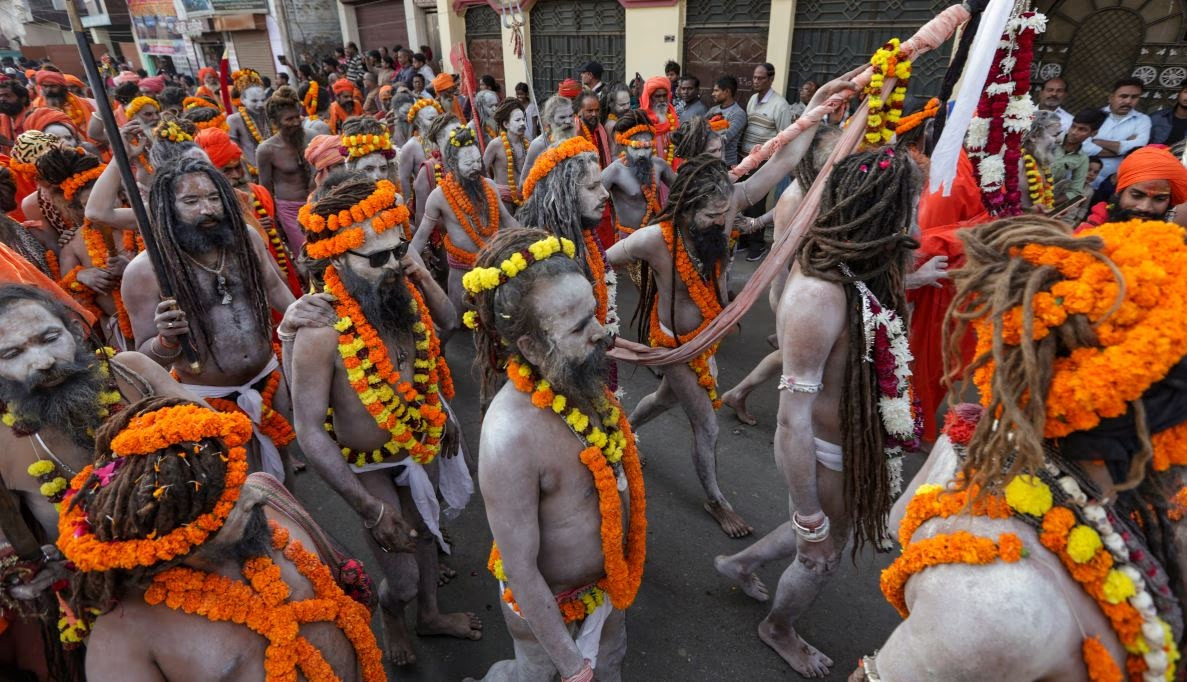
Source: aajtak
Often, the ash Naga Sadhus cover themselves with is sourced from the cremation grounds, also termed as sacred fire offerings. Misunderstandings arise when traditional practices are unknown, including the practice of Naga Sadhus remaining unclothed, followed by female ascetics who adhere to the Naga path.
The Life of a Naga Sadhvi
It's queried why male Naga ascetics are visible while female Naga Sadhvis aren't. Mahant Divya Giri explains that Naga Sadhvis, too, are Digambar but remain concealed due to societal norms, preferring seclusion. Despite their involvement, they aren't presented publicly, explaining their absence at Kumbh. The tradition of female akharas initiated in 2013, since then Sadhvis have participated in this grand event.
Practicing Own Cremation Rituals
Naga Sadhu Maniraj Puri, from Haridwar, shares stories of becoming a full Naga Sadhu after leaving home at age 13 and living in the mountains of Uttarakhand. He remarks that after undergoing three processes, he now fully embodies the Naga Sadhu way, having renounced worldly pursuits.
Explaining the arduous journey to becoming a Naga, Maniraj Puri highlights the symbolic cremation and offering of one's own body prior to renouncing. The final process involves self-defiling in a secretive rite meant to conquer physical desires. The intricacies of this secret remain undisclosed, preserving its sanctity.
At Kumbh, the ceremonial Amrit Snan begins with the Naga Sadhus, revered as the most sanctified due to their rigorous penance and total renunciation. Only after their ritual purification do other saints and pilgrims partake in the Kumbh rituals. Following the completion of the Kumbh, the Naga Sadhus smear their bodies with soil from the sacred ground before retreating to seclusion or their ashrams, returning in time for future Kumbh gatherings.
